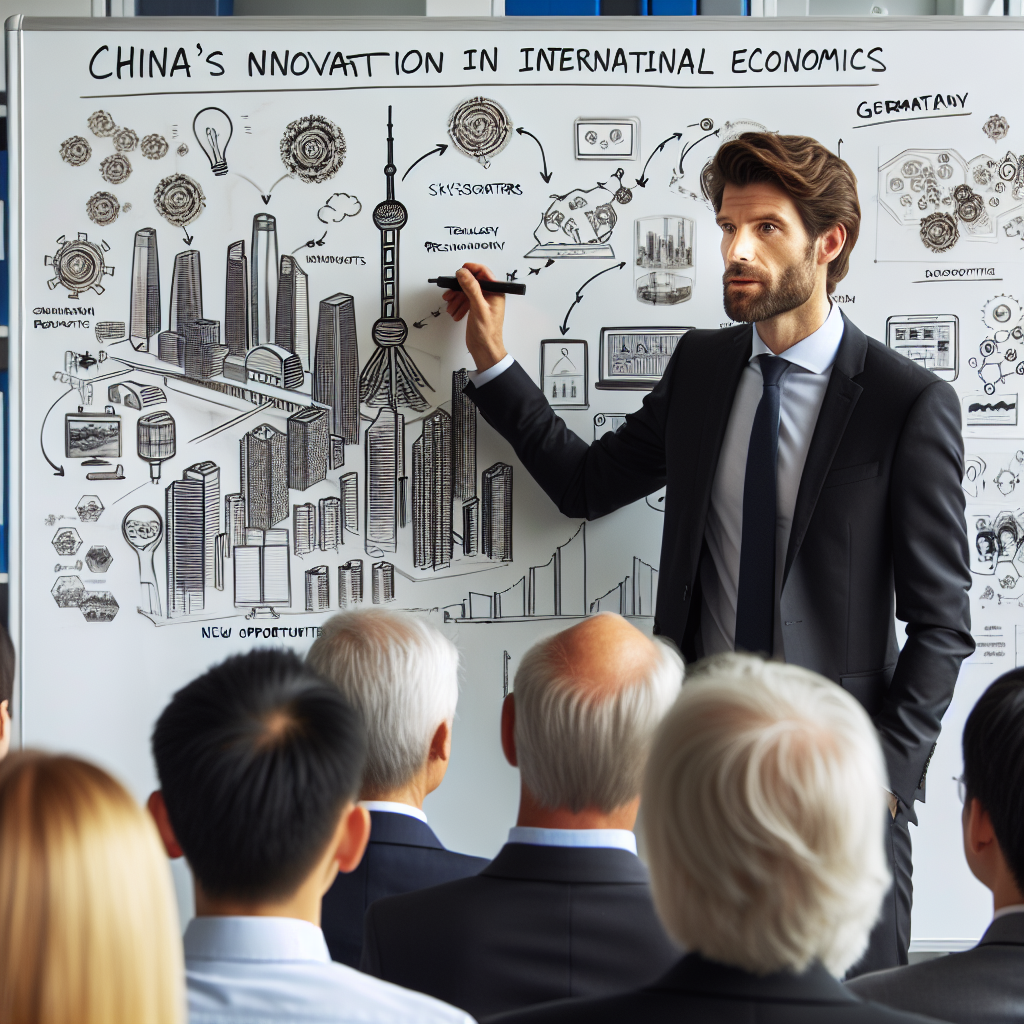China’s Innovation-Driven Growth Offers Global Prosperity
China’s rapid transformation into a powerhouse of innovation is not just reshaping its domestic economy—it’s opening doors for global cooperation and opportunities. In a recent interview with Xinhua, renowned German economist and China expert Eberhard Sandschneider highlighted how China’s commitment to innovation, technology, and openness is benefiting the world. As Western economies grapple with economic pressures, China’s forward-thinking investments in R&D, digital infrastructure, and green technologies present a compelling model and a valuable partner.
Germany Recognizes China’s Leadership in Innovation
According to Sandschneider, a former professor of Chinese politics and international relations at the Free University of Berlin, China’s continuous investment in research and development is driving global progress in key sectors such as:
- Artificial Intelligence
- Green Energy
- Smart Manufacturing
- 5G and Digital Infrastructure
Germany, with its industrial and technological foundation, sees China not just as a competitor but as an essential collaborative partner. As Sandschneider notes, “When China is successful, it creates opportunities for others.”
High-Quality Development as a Global Growth Engine
The economist emphasized the significance of China’s modernization strategy rooted in “high-quality development.” Unlike traditional models focused purely on GDP growth, China is now prioritizing sustainable, innovation-led growth that aligns with environmental goals and societal well-being.
Sandschneider observed that this model offers important lessons for Western nations struggling with aging infrastructure and declining productivity. By moving up the value chain, China is no longer just “the world’s factory”—it is becoming a global incubator of ideas, digital solutions, and green technologies.
China’s Innovation Push: Key Drivers
Some of the foundational pillars of China’s innovation strategy include:
- Increased R&D Spending: China is consistently among the top spenders globally on research and development.
- Supportive Policy Environment: Government initiatives like Made in China 2025 and the 14th Five-Year Plan prioritize tech advancement and green energy.
- Robust Talent Pipeline: China is cultivating a new generation of engineers, scientists, and entrepreneurs to lead the innovation wave.
China’s Openness Attracts Foreign Collaboration
Despite global tensions and geopolitical divides, China continues to promote openness and mutual development. Sandschneider pointed out that China’s annual “Two Sessions” political meetings consistently send signals of openness and collaboration, particularly in trade, investment, and technology.
Germany, as China’s largest trading partner in Europe, stands to benefit immensely from deeper ties. Collaboration in fields like automotive technology, clean energy, and digital solutions is especially promising. “Countries that engage constructively with China’s innovation progress will reap long-term dividends,” Sandschneider said.
Examples of Successful Sino-German Innovations
- Electric Mobility: German automotive firms are closely partnering with Chinese EV manufacturers to develop next-gen vehicles.
- Green Hydrogen: Joint investments in renewable hydrogen energy are being explored by companies in both nations.
- Smart Factories: German engineering expertise and Chinese digital infrastructure create synergistic Industry 4.0 solutions.
The Global Implication: A New Innovation Ecosystem
Sandschneider emphasized that the emergence of a Chinese-led innovation model does not threaten the West—it complements it. The world is seeing the development of a multipolar innovation landscape, where progress is democratized and inclusive.
This diversification enhances global resilience, ensuring that breakthroughs in clean energy, digital health, and AI originate from multiple global hubs. For developing nations, China becomes a model and a partner offering accessible technology and development assistance.
Challenges and Opportunities Ahead
Of course, Sandschneider noted that China, like any nation, faces challenges: demographic shifts, regional inequalities, and new global trade dynamics. However, its focus on structural reforms and a long-term vision enables it to navigate these complexities.
For international partners, especially those in the EU, engaging with China’s innovation strategy requires openness, mutual respect, and understanding. Cooperation—not decoupling—will fuel global prosperity.
Conclusion: A Future Built on Shared Innovation
China’s innovation-driven development presents not only a success story but a pathway that other nations may follow or collaborate with. As highlighted by German economist Eberhard Sandschneider, China’s openness and commitment to high-quality growth provide remarkable new opportunities for global partners.
At a time when the world faces many shared challenges—from climate change to digital transformation—China’s approach to modernization offers a roadmap for inclusive global progress. For countries that choose to engage constructively, the future looks not only interconnected but also brightened by shared innovation.



Leave a Reply